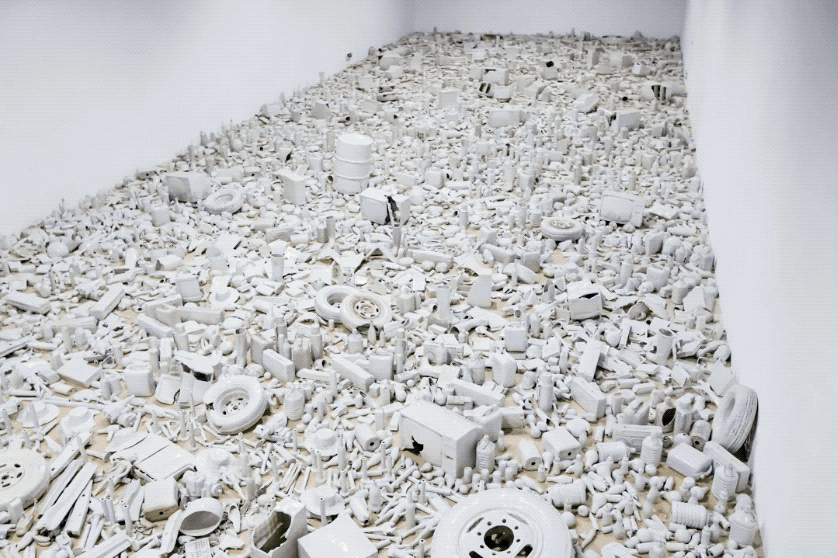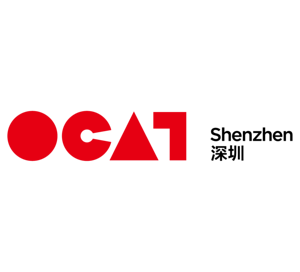1342ºC
December 7, 2019–April 7, 2020
F2 Building, OCT-LOFT
Enping Road, Nanshan
Shenzhen
China
Hours: Tuesday–Sunday 10am–5:30pm
info@ocat.org.cn
1342ºC is the highest temperature when firing ceramics. The exhibition title, 1342ºC, is part of the series of case study research that has been undertaken by the OCAT Shenzhen, indicating how Liu Jianhua is working within and against the limits of “porcelain” as a medium, as well as the unpredictability of materials and firing process. This also invokes Liu Jianhua’s years of ongoing artistic experimentation with the process and results of “melting points” and relating to his active “igniting point” within the context of contemporary Chinese art. Liu Jianhua’s solo exhibition comprises the technical means and methods of porcelain firing, specific forms, his use of media and visual language, the exhibition space, and display. It is an exploration of the intrinsic logic and multidimensional realization of the relationships between tradition and the present, as well as between material and visual cultures.
In Chinese traditional culture, the five elements are metal, wood, water, fire and earth, with “earth and fire” simultaneously constituting and symbolizing the material world. As specific manifestation of “earth and fire,” porcelain has always been closely related to Liu Jianhua’s experience of survival, growth and creation. Liu Jianhua’s sensitivity to, awareness of, and mastery over porcelain derive from this understanding of porcelain as elemental matter. The current solo exhibition manifests the concepts and visual turn that have characterized Liu Jianhua’s art in recent years. These works have long since escaped the exaggeration and irony of gaudy expression, and turned from his previous work in realism and sociological investigation. Although there seems no clear and realistic cultural orientation, nevertheless the traditionally shaped porcelain utensils, such as Container, Filled, Blank Paper, Rope, and The End of 2012. In particular, works such as Fallen Leaves, Rime, and Sand reveal how continuous experimentation with porcelain firing technologies transforms raw nature into true-to-life quotidian objects and primal objects, realistically and naturally combining simple, rustic details, as well as love of the material and the object’s essential charm. As far as the theme structure of the work is concerned, it is not a grand narrative, nor is it something outside our ordinary social life. It seems that form is casually bestowed, without leaving traces of cultural orientation, creating the illusion that the artist’s work is inaction, so that all that remains is delight in the texture and transformation that is porcelain art and the surprises that are caused by hands that shape and reshape the clay. In fact, these works Liu Jianhua neither intentionally pursued the glazed appearance of artifacts, nor succumbed to personalized taste.
In terms of artistic expression, the inadvertent is actually a force, giving people the feeling of returning to nature and being natural. Wang Xiaosong has said, “An important source of Liu Jianhua’s art is the experience of everyday life. He uses the materials that everyone is familiar with to carry out the ‘reincarnation’ of ordinary things in life, creating a special ‘meaningless’ in a strange space” (Wang Xiaosong, ed. (2019). Clinging to the Surface: Liu Jianhua, 2008-2018. Shanghai: Sanlian Bookstore, 64.) In my opinion, replication and restructuration as means of effecting transformation has changed the function and essence of porcelain as a material and exceeded the unique product of traditional porcelain, becoming an identity that records traces of nature, time and memory. This process directly corresponds to and measures the vicissitudes of nature and ecology. At his Jingdezhen porcelain factory, for example, apprentices repeatedly beat clay into colorful forms that comprise Color. Perhaps this constitutes the visual simplicity, purity and extreme dryness of his work. The tangible items in Liu Jianhua’s works are gradually changed by invisible things into intangible insight and unfolding. In other words, Liu Jianhua neither limited the unfolding of time and space to the level of record, nor was he satisfied by converting the medium into a simple visual image, instead he precipitated his attitudes and feelings about nature and life into the “object’s” background color, transcending the dust of time to discover and rethink how we know our situation. Therefore, he has realistically expressed the interiority of the real world, giving us an abstract expression of inner refraction.
–Feng Boyi



